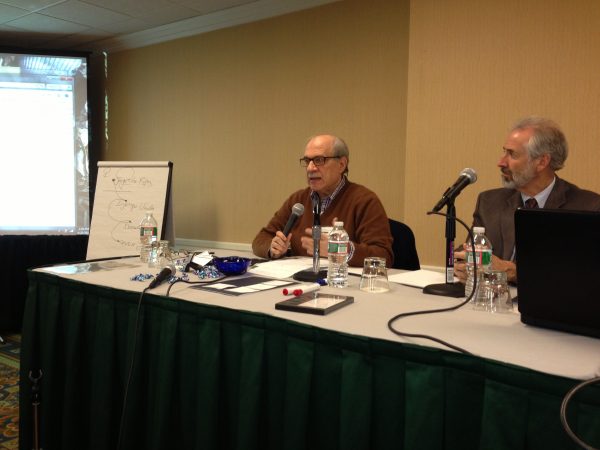Ferro said that in the few days of this weekend conference he had not tried to convey concepts. He is grateful for all the models he has learned over the years (Bion, Klein, Winnicott, Ogden), but what matters to him most is the democracy of models; for instance, Ogden’s “the analytic third” can be thought of as being a concentration of “the field” and an equivalent to the concept of “the link” introduced by Pichon-Riviere and elaborated by the Barangers. At this moment Alpha function and Beta elements are not so important to him. He said that what matters is to have an experience together, to share our ideas, and to think about how the mind works. His aim in this workshop was to show us how to create an atmosphere that allows the patient to come alive and be creative and then to co-construct an experience that is transformative. Ferro said that he appreciated the warm, free atmosphere at the International Psychotherapy Institute in which we could dream together and create a narration. He likes the group affective model developed at the International Psychotherapy Institute and hopes to export it to his own teaching.
“I appreciate the warm, free atmosphere at the International Psychotherapy Institute in which we can dream together and create a narration. I like very much the group affective model developed at the International Psychotherapy Institute and I want to export it!” Antonino Ferro, President, Italian Psychoanalytic Association.


